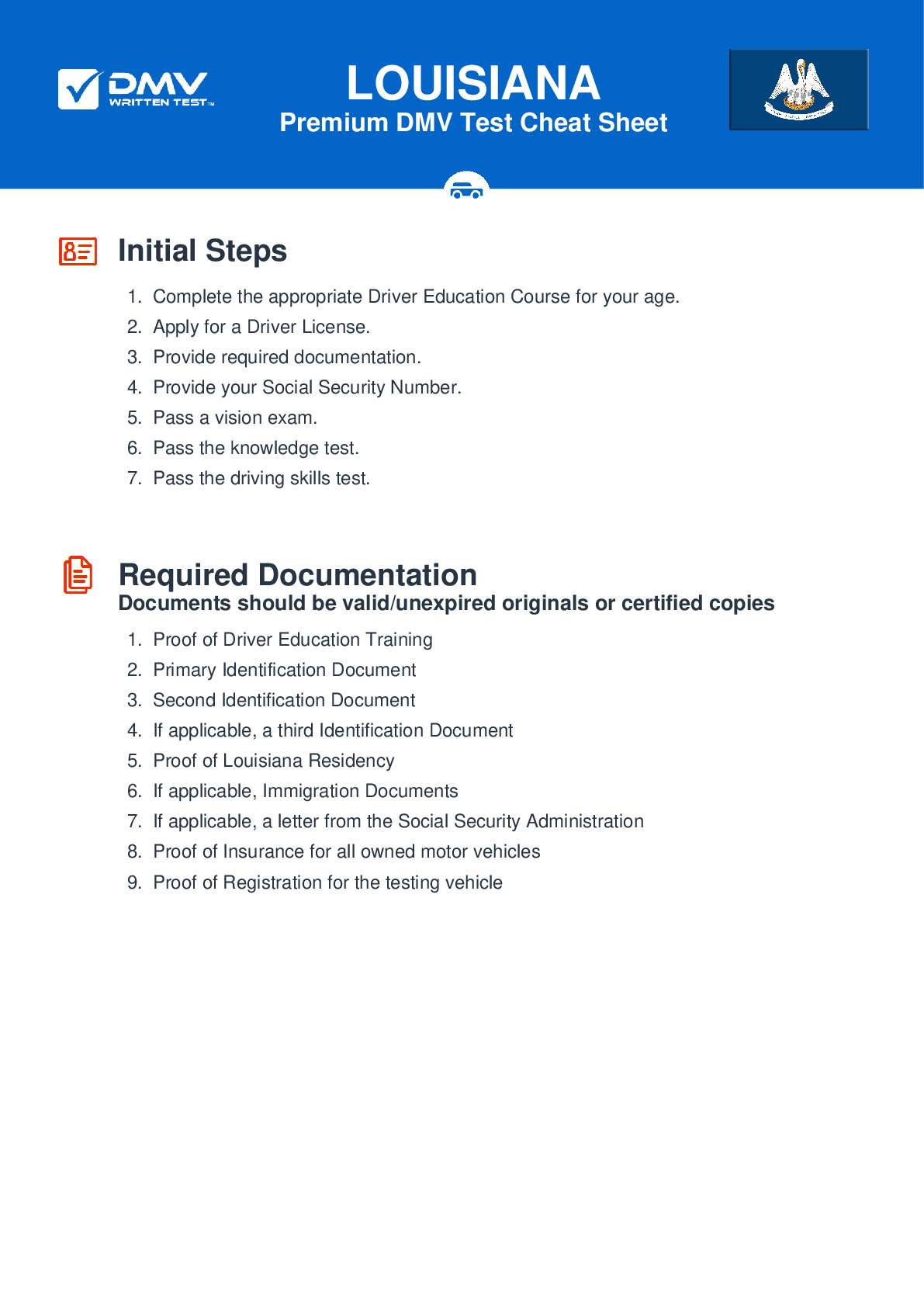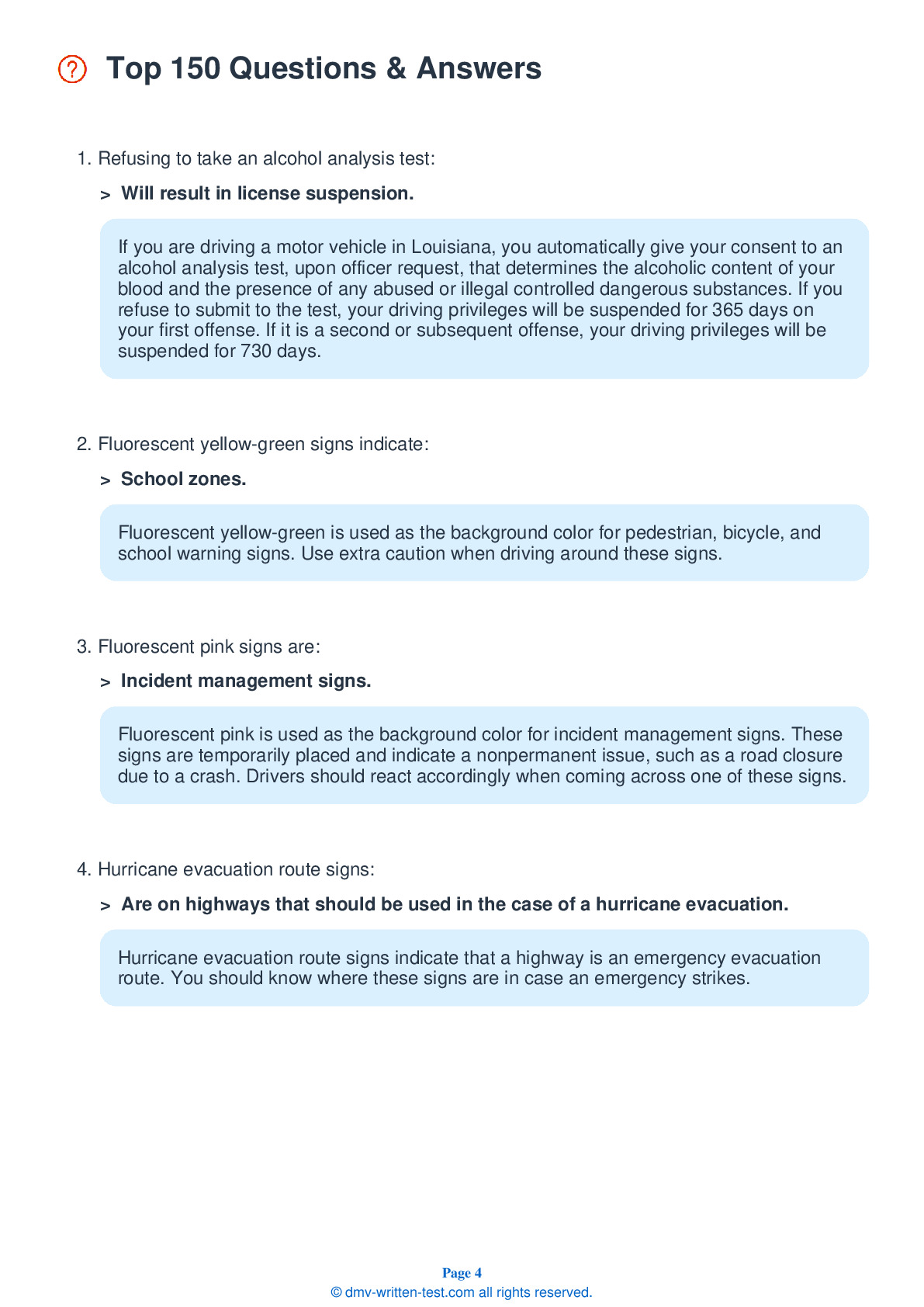2025 Louisiana Permit Test 15
The following questions are from real DMV written tests. These are some of the actual permit questions you will face in Louisiana. Each permit practice test question has three answer choices. Select one answer for each question and select "grade this section." You can find this button at the bottom of the drivers license quiz. For a complete list of questions and answers for Louisiana please visit https://cheat-sheets.dmv-written-test.com/en/louisiana/car.
Number of Tests
Number of Question
Passing Score
9. When completing a turn, when should drivers begin to accelerate?
Explanation
Near the middle of the corner, begin to accelerate. Continue looking around the bend on your intended travel path.
10. The most important thing to remember about speed management and curves is that you must:
Explanation
The most important thing to remember about driving in curves is that your vehicle’s inertia may make it difficult to turn. To maintain control, it is essential that you slow down before entering the curve.
11. When changing lanes on a highway, you should:
Explanation
Any time you want to change lanes, you should properly signal your intentions well in advance, check your mirrors, and check your blind spot. You can check your blind spot by glancing over your shoulder in the direction that you plan to move.
12. Drivers should use hand-to-hand steering:
Explanation
Use hand-to-hand steering while driving normally at speeds above 15 mph. Hand-to-hand steering is also commonly called push/pull steering.
13. You approach an emergency vehicle that is stopped with its lights flashing. You must:
Explanation
If you approach an emergency vehicle, tow truck, or roadside assistance vehicle that is stopped with its lights flashing, you must change lanes to allow the vehicle extra space. If there is only one lane moving in your direction, or if changing lanes would be unsafe, you must slow down to a speed below the posted speed limit and give the stationary vehicle as much room as possible. Always slow down and be prepared to stop when you approach an emergency scene.
14. When driving on wet pavement, it's important to remember:
Explanation
Wet roadway surfaces can be dangerously slick, especially immediately following a rainfall. When you are driving on wet roads, your vehicle is traveling on a thin layer of oil, dirt, and water. Slow down when there is heavy rain, standing water, or slush on the road to reduce the risk of your wheels losing traction on the slick surface.
15. The best way to avoid hydroplaning is to:
Explanation
When roads are wet, cars take a longer distance to stop and may skid on quick turns. Do not use cruise control when driving under wet or icy conditions. Reduce your speed and drive with caution.
16. If a flagger is directing traffic in a construction zone, you must:
Explanation




